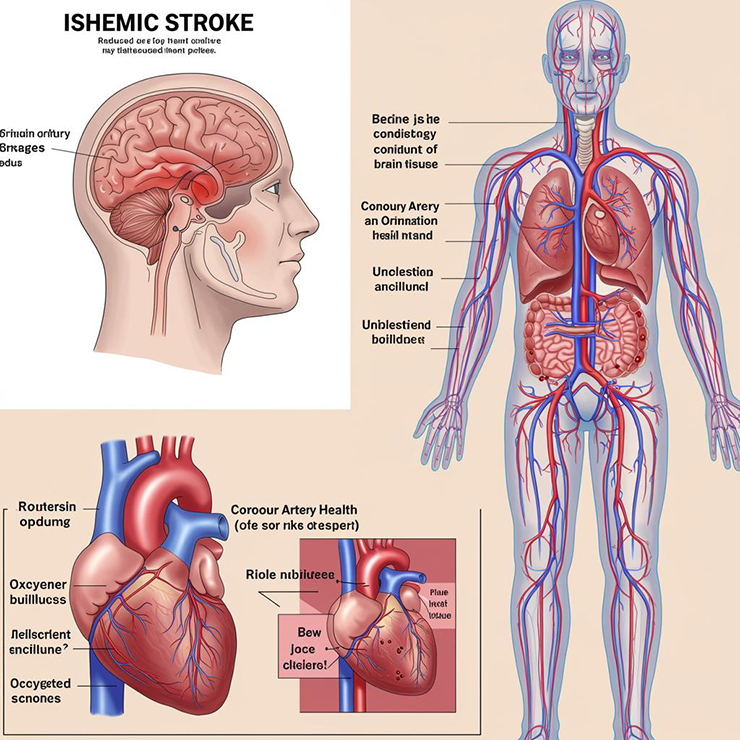Panax notoginseng saponins (PNS) are the primary active components extracted from the root or rhizome of Panax notoginseng (also known as Tianqi or Sanqi), containing various saponins such as ginsenosides Rg1, Rb1, Re, Rd, and notoginsenoside R1. Clinical research has primarily focused on its effects in cardiovascular and cerebrovascular diseases, anti-inflammatory activity, antioxidant properties, and tissue protection. Below is a summary of existing clinical data:
- Cardiovascular and Cerebrovascular Diseases
(1) Ischemic Stroke
- Clinical Studies:
- Multiple randomized controlled trials (RCTs) indicate that PNS (e.g., Xuesaitong Injection or oral formulations) combined with conventional treatment (e.g., aspirin) can improve neurological deficit scores (NIHSS) and daily living ability (Barthel Index) in stroke patients, with significantly higher efficacy than control groups (PMID: 32350721).
- Mechanism: Inhibits platelet aggregation, improves microcirculation, and reduces ischemia-reperfusion injury.
(2) Coronary Heart Disease/Angina Pectoris
- Meta-analysis (including dozens of RCTs):
- PNS injections (e.g., Xueshuantong) can reduce the frequency of angina attacks and improve ECG ST-T segment changes (total effective rate ~70-85% vs. 50-65% in control groups) (PMID: 31568905).
- Potential mechanisms include coronary artery dilation and antithrombotic effects.
(3) Recovery After Cerebral Hemorrhage
- Small-scale trials suggest PNS may promote hematoma absorption, but more high-quality evidence is needed (controversial).
- Antithrombotic and Microcirculation Improvement
- Clinical Observations:
- PNS inhibits platelet-activating factor (PAF) and thrombin, reducing blood viscosity, and is used for hypercoagulable states or post-surgical thrombosis prevention (some studies show comparable efficacy to low-molecular-weight heparin).
- Other Clinical Applications
(1) Diabetic Complications
- Adjunctive therapy for diabetic peripheral neuropathy (improving numbness and pain) and retinopathy (delaying microvascular damage).
(2) Anti-inflammatory and Antioxidant Effects
- In chronic kidney disease and pulmonary fibrosis, PNS may reduce inflammation by inhibiting the NF-κB pathway (limited clinical data).
(3) Wound Healing
- Topical application (e.g., gel formulations) may accelerate wound healing and reduce scarring (supported by animal studies, limited human trials).
Safety Data
- Adverse Reactions:
- Generally well-tolerated; mild side effects include dizziness, gastrointestinal discomfort, or injection-site pain.
- Injections may cause allergic reactions (e.g., rash, dyspnea)—close monitoring required.
- Contraindications:
- Use with caution in patients with bleeding disorders, perioperative periods, or pregnancy (due to antiplatelet effects).
Controversies and Limitations
- Quality of Evidence:
- Most studies are from China, with limited international recognition; some trials have small sample sizes or design flaws (e.g., lack of double-blinding).
- Unclear Mechanisms:
- While in vitro/animal studies suggest multi-target effects, pharmacokinetics and exact mechanisms in humans require further validation.
Preparations and Dosage
- Common Products:
- Xuesaitong (injection/lyophilized powder), Xueshuantong capsules, Compound Danshen Dripping Pills (containing PNS).
- Dosage:
- Oral: Typically 100-200 mg/dose, 2-3 times daily; injections require medical supervision.
Conclusion
PNS demonstrates potential efficacy in adjuvant therapy for cardiovascular and cerebrovascular diseases (especially stroke and angina), but more high-quality international multicenter studies are needed. It should be used under medical supervision to avoid bleeding risks when combined with anticoagulants.








